
SPARTAN
Warrior Series
Standard, Hi-Flow & Ultimate
Owner’s Manual
Record the Serial Number of your
and give the number to the factory
when ording parts.
79940010 9-30-16 © 2016 Spartan Tool LLC
SPARTAN TOOL L.L.C.
8 0 0 . 4 3 5 . 3 8 6 6
www.spartantool.com
Warrior
Serial
Number ...........................................
Standard Warrior
Ultimate & High Flow Warrior

Page 2
Warrior Overview
Pressure
Gauge
Fill Reel
Anti-Freeze
Recirculation Valve
Hose Reel
Hydraulic Control
Hose Guide
Articulated
High-Pressure Reel
500 Ft. H.P. Hose
Control Panel
Front Enclosure
Break-Away Brake
Controller
12 Volt Battery
Hydralic Reservoir
Antifreeze Supply Valve
Electric Brakes
300 Gallon Bafed
Water Tank(s)
Ultimate & High Flow
have 2 Water Tanks
connected together
Anti-Freeze Tank

Page 3
Warnings
―Read the safety and operating instructions before using any Spartan Tool products. Drain and sewer
cleaning can be dangerous if proper procedures are not followed and appropriate safety gear is not
utilized. Read the Engine Owner’s Manual for instruction and safety precautions on engine operation.
― Diesel is ammable and is explosive under certain conditions.
• Refuel in a well ventilated area with the engine stopped. Do not smoke or allow ames or sparks in
the area where the engine is refueled or where diesel is stored.
• Do not overll the fuel tank (there should be no fuel in the ller neck). After refueling, make sure the
tank cap is closed properly and securely.
― Use Diesel STA-BIL Fuel Stabilizer during storage and during normal use to prevent fuel deterioration.
― Before starting unit, be sure to wear personal protective equipment such as safety goggles or face shield
and protective clothing such as gloves, coveralls or raincoat, rubber boots with metatarsal guards, and
hearing protection.
― Carbon monoxide exhaust and/or gasoline fumes from this equipment can create a hazardous
atmosphere in conned spaces (which may include, but are not limited to, manholes, septic tanks,
closed garages, or other areas which may not be properly ventilated). In particular, excess gasoline
fumes can create an explosion hazard. Such hazardous atmospheres can cause death or severe injury.
Do not operate this equipment in any conned space or area with inadequate ventilation. Operate this
equipment only when located outdoors or in an open well-ventilated area.
― Insure the jet hose has been placed in the pipe (minimum of 6 feet suggested) before engaging the
water pressure to prevent the hose from coming out of the pipe prematurely and causing injury. Always
use the red leader hose provided.
― Always shut the water pressure off before pulling the hose out of the pipe. Mark the hose a minimum
of 6 feet from the end to help insure the hose is not accidentally pulled out of the pipe while still under
pressure. Shut off the water pressure when the hose mark is encountered. Warning: Portions of the
system can still be under pressure even if the unit is not operating.
― Never point the wash gun at anyone while operating the unit. Injury may result.
―Drains and sewer can carry bacteria and other infectious micro-organisms or materials which can
cause death or severe illness. Avoid exposing eyes, nose, mouth, ears, hands, and cuts and abrasions
to waste water or other potentially infectious materials during drain and sewer cleaning operations. To
further help protect against exposure to infectious materials, wash hands, arms, and other areas of
the body, as needed, with hot soapy water. If necessary, ush mucous membranes with water. Also,
disinfect potentially contaminated equipment by washing such surfaces with a hot soapy wash using a
strong detergent.
“California Prop. 65: This product may contain an extremely small amount of lead in the coating.
Lead is a material known to the State of California to cause cancer or reproductive toxicity.”
― For any questions contact the company at the address shown below.
SPARTAN TOOL L.L.C.
1506 W. Division Street
Mendota, IL 61342
800.435.3866 ♦Fax 888.876.2371
www.spartantool.com

Page 4
Table of Contents
OPERATING SECTION
Hi-Flow Ultimate Warrior Overview .......................................................................................................... 2
Warning .................................................................................................................................................... 3
Table of Contents...................................................................................................................................... 4
Water Jet Specications ........................................................................................................................5-7
Water Jet Features ................................................................................................................................... 8
Towing Instructions ............................................................................................................................ 10-11
Pump and Pressure System ................................................................................................................... 12
High Pressure Water Jetting ................................................................................................................... 13
Included Nozzles .................................................................................................................................... 13
Water Tank Filling ................................................................................................................................... 14
Engine Operating Procedure .................................................................................................................. 14
Setting up for Operation ......................................................................................................................... 15
Hydraulic Rewind Operating Instructions ............................................................................................... 16
Operating Instructions .......................................................................................................................16-17
Pipe Jetting Procedure ........................................................................................................................... 18
When Obstructions Are Encountered ..................................................................................................... 18
Pulsation ................................................................................................................................................. 19
Wash Down Gun .................................................................................................................................... 19
Cold Weather Protection ...................................................................................................................20-21
Lubrication and Maintenance ............................................................................................................22-26
Pump System Malfunction Chart ............................................................................................................ 27
Control Panel .....................................................................................................................................28-29
Troubleshooting ...................................................................................................................................... 30
Electric Braking Systems ...................................................................................................................31-32
Tire Safety Information ......................................................................................................................33-35
Reporting Saftey Information .................................................................................................................. 36
Diesel Engine Information ...................................................................................................................... 37
Warranty ................................................................................................................................................. 38
For Service and Part Information, plese refer to the Warrior Service Manual r

Page 5
Standard Warrior Water
Jet Specications
Pipe Sizes ...................... 3” to 24” Max. Water Delivery..... 18.0 GPM
Max. Pressure Delivery ..... 4000 psi
GENERAL
Gross Vehicle Weight Rating (GVWR) .....7060 Lbs (3202 kg)
Gross Axle Weight Rating (GAWR) ..........6460 Lbs (2930kg)
Trailer Length .............................................160”
Trailer Width ............................................... 73”
Trailer Height..............................................74”
Hitch ............................................................2” Ball Type (Class IV)
Tires ............................................................ST235-80-R16BE-I
Water Tank..................................................300 Gallon Capacity
Tires (Max Load) ........................................3520 lbs (each)
Cold Ination Pressure .............................80 PSI/552 kPa (each)
Rim (Diameter X Width X Capacity) .........16” x 6” x 3750 lbs (each)
TRAILER
Model ..........................................................KDI 2504 TCR
Horsepower ................................................ 74@2600 RPM
Cylinders ....................................................4
Bore & Stroke.............................................3.46 x 4.02
Displacement .............................................151.45
Fuel .............................................................Diesel Fuel Oil No. 2-D (ASTM D975-09 B-Grade 2-D S15)
Fuel Tank Capacity ....................................20 Gal.
Cooling .......................................................Water Cooled
Oil Capacity ................................................ 3.5 Gal.
Alternator ...................................................65 Amp
Electric........................................................12 Volt/Negative Ground
Powered Engagement Clutch ................... WPT Clutch/Power Take Off
.....................................................................enables engine to run without circulating pump
ENGINE Kohler Turbocharged Diesel (Tier IV)
Max. Pressure .............. 4000 psi
Max. Water Output ........18 GPM
Max. Temperature ........ 140º F
RPM................................1250
Plungers ......................... 3
PUMP
Hydraulic/Capacity ........ Hydraulic Pump & Motor with 8 Gallon Reservoir
REWIND

Page 6
Ultimate Warrior Water
Jet Specications
Pipe Sizes ...................... 3” to 24” Max. Water Delivery..... 18.0 GPM
Max. Pressure Delivery ..... 4000 psi
GENERAL
Gross Vehicle Weight Rating (GVWR) ..... 9900 Lbs (4495 kg)
Gross Axle Weight Rating (GAWR) .........4700 Lbs (2134kg each)
Trailer Length ............................................191”
Trailer Width .............................................. 73”
Trailer Height .............................................74”
Hitch ...........................................................2-5/16” Ball Type (Class IV)
Tires ...........................................................ST225-75-R15BD
Water Tank .................................................600 Gallon Capacity
Tires (Max Load) .......................................2540 lbs (each)
Cold Ination Pressure ............................65 PSI/448 kPa (each)
Rim (Diameter X Width X Capacity) ........15” x 6” x 2600 lbs (each)
TRAILER
Model .........................................................KDI 2504 TCR
Horsepower ................................................ 74@2600 RPM
Cylinders ...................................................4
Bore & Stroke ............................................3.46 x 4.02
Displacement ............................................151.45
Fuel .............................................................Diesel Fuel Oil No. 2-D (ASTM D975-09 B Grade 2-D S15)
Fuel Tank Capacity ...................................20 Gal.
Cooling ......................................................Water Cooled
Oil Capacity ............................................... 3.5 Gal.
Alternator ...................................................65 Amp
Electric .......................................................12 Volt/Negative Ground
Powered Engagement Clutch... ................WPT Clutch/Power Take Off
enables engine to run without circulating pump
ENGINE Kohler Turbocharged Diesel (Tier IV)
Max. Pressure .............. 4000 psi
Max. Water Output ........18 GPM
Max. Temperature ........ 140º F
RPM................................1250
Plungers ......................... 3
PUMP
Hydraulic/Capacity ........ Hydraulic Pump & Motor with 8 Gallon Reservoir
REWIND

Page 7
Hi-Flow Warrior Water
Jet Specications
Pipe Sizes ...................... 4” to 36” Max. Water Delivery..... 35 GPM
Max. Pressure Delivery ..... 3000 psi
GENERAL
Gross Vehicle Weight Rating (GVWR)................. 9900 Lbs (4495 kg)
Gross Axle Weight Rating (GAWR) ..................... 4700 Lbs (2134kg) (each)
Trailer Length ...................................................... 191”
Trailer Width ........................................................ 73”
Trailer Height ....................................................... 74”
Hitch .................................................................... 2-5/16” Ball Type (Class IV)
Tires .................................................................... ST225-75-R15BD
Water Tank .......................................................... 600 Gallon Capacity
Tires (Max Load) ................................................. 2540 lbs (each)
Cold Ination Pressure ........................................ 65 PSI/448 kPa (each)
Rim (Diameter X Width X Capacity) .................... 15” x 6” x 2600 lbs (each)
TRAILER
Model ........................................... KDI 2504 TCR
Horsepower ................................. 74@2600 RPM
Cylinders ...................................... 4
Bore & Stroke .............................. 3.46 x 4.02
Displacement ............................... 151.45
Fuel............................................... Diesel Fuel Oil No. 2-D (ASTM D975-09 B Grade
2-D S15)
Fuel Tank Capacity ...................... 20 Gal.
Cooling ........................................ Water Cooled
Oil Capacity ................................. 3.5 Gal.
Alternator ..................................... 65 Amp
Electric ........................................ 12 Volt/Negative Ground
Powered Engagement Clutch...... WPT Clutch/Power Take Off
enables engine to run without circulating pump
ENGINE Kohler Turbocharged Diesel (Tier IV)
Max. Pressure .............. 3000 psi RPM................................1000
Max. Water Output ........35 GPM Plungers ......................... 3
Max. Temperature ........ 140º F
PUMP
Hydraulic/Capacity ........ Hydraulic Pump & Motor with 8 Gallon Reservoir
REWIND

Page 8
Warrior
Features
―Low Water and Oil Protection
―High Engine Temperature Protection
― 1/2” x 500’ Thermal Plastic High Pressure Hose (5/8” Hose for High Flow)
― 1/2” x 15’ Colored Leader hose
― 5/8” x 100’ Supply Hose, Mounted On Reel
― Torsion Axle Suspension With Electric Brakes (Dual Axles for Ultimate & High Flow)
― Tier IV Diesel Engine Meets US Emissions Standards Thru 2016
― Easy Access Pump Inlet Filter
― Safety Engagement Clutch (enables engine warm up without running pump)
―Hydraulic Hose Rewind and Hose Rewind Guide
― Rear Operator Control and Instrument Gauge
― 12 Volt Accessory Plug
―Negative Ground Wiring
― 5’ Break Away Wiring Harness
―Hitch Jack with Swivel Caster Wheel
― Class IV 2” (Standard) 2-5/16” (Ultimate & High Flow) Hitch with Safety Tether Brake
― Automatic Pressure Regulator
―180 Degree Pivoting Hose Reel and Controls
― Fully Enclosed
―Nozzle Storage
―Wash Down Wand
― Top-Mounted Amber Strobe Light
―4 Preassigned Engine Speed Settings
― ST235-80-R16E-I Tires/Wheel on Standard (ST225-75-R15BD for Ultimate & High Flow)
― Bearing Buddies
―Open and Closed Nozzles
― Hose and Hydrant Fill Valves
― Anti-Freeze Recovery/Winterization System
―Electric Operated Water Pulsator
― National Association of Trailer Manufacturers Certied
FEATURES

Page 9
Towing Instructions
Before hitching and towing on public roads, check that the tow vehicle uses a 2-5/16”
ball on a hitch rated class IV,(2” diameter for Standard Warrior) make sure keeper
engages ball to secure hitch. Adjust if necessary.
The 300 gallon water tank(s) are equipped with internal bafes which minimize water
sloshing when towed, however; the following 2 rules may limit your vehicles towing
capacity and the tank ll level when towed. Determine towing capacity as described
below and follow guidelines in using the lowest value from the 2 rules.
Trailer Hitch
― Check rating of vehicle’s trailer hitch - Standard Warrior:Class IV - 10,000 lbs. Towing Capacity
― Ultimate & High Flow Warrior: Class IV- 12,000 lbs Towing Capacity
Vehicle GCWR (Gross Combined Weight Rating)
―Towing capacity = GCWR minus vehicle weight minus cargo weight minus passenger weight.
Note: GCWR is provided on your vehicle or in vehicle manual.
Vehicle Towing Capacity
― Refer to your Vehicle Owner’s Manual for listed trailer towing capacity.
― Trailer towing capacity should equal GCWR minus vehicle weight, cargo weight, people weight,
and (vehicle) uids weight.
― Check axle load rating.
Wire the plug receptacle to your vehicle as shown below.
Note: The wire colors used on the jet running lights are also indicated in Fig. 8-1 for re-wiring to a different
plug design.
Fig. 7-1
— Always use trailer lights.
BROWN (RIGHT, STOP & TURN)
WHITE (GROUND)
BLUE (ELECTRIC BRAKES)
GREEN (TAIL & LICENSE)
RED (LEFT, STOP & TURN)
YELLOW (AUXILARY)
NOT USED
BLACK (BATTERY CHARGE)
View Looking Toward Recepticle

Page 10
Towing
1. Check that the Ball Load Rating is the same or greater than the Coupler Load Rating.
2. Check that the ball size is the same as the coupler.
3. Loosen loop nut until spring pushes lip down far enough to insert trailer hitch ball.
4. Position hitch coupler above trailer hitch ball.
5. Lower trailer tongue until ball rests in ball socket..
6. Tighten loop nut to pull lip up to ball. While tightening loop nut feel under the coupler to make sure
square bolt head is up in the square lip cavity is under the ball head. Jiggle coupler up and down
while tightening to make sure it is snugly seated on ball.
7. Lift coupler upwards to test that it will not separate from ball.
Caution: Hand-Tighten coupler snug on ball. Do not use a
wrench or bar to tighten coupler. Over-tightening strains wears
bolt and nut threads, and may cause coupler to seize on the ball
and turn on its own nut thus loosening the ball on right turns.
8. Connect breakaway cable solidly to bumper or frame of tow
vehicle as near to center as possible. The cable must hang
clear of trailer tongue and be long enough to permit short
radius turns without pulling breakaway cable forward.
9. Make sure breakaway cable is in the released position.
Caution: Do not use breakaway cable as a parking brake.
Note: Check location of breakaway cable periodically during
each trip. Accidental application will cause brakes to drag and
heat up, causing failure.
10. Cross safety chains under tongue and securely attach to
bumper or frame of tow vehicle.
Caution: Always use safety chains. Chains hold trailer if connection fails.
11. Fully retract hitch jack and remove skid plate. This will provide adequate ground clearance for
transport.
12. Return high pressure reel to towing position, engage the transit lock, and place the hydraulic
control lever in the neutral position.
13. You are now ready to tow your trailer.
Caution: Avoid sharp turns. This could bend, create extreme stress, or fracture either the
actuator or trailer tongue.
Towing Instructions (cont.)
Breakaway
Cable
Breakaway
Cable
Standard
Coupler uses 2”
Ultimate & High
Flow 2-5/16” ball
Safety Chains Fig. 8-1
Fig. 8-2

Page 11
Towing Instructions (cont.)
Cast Steel Couplers
No Wrench or Bar Needed to Tighten Nut Down Snug
Parts Function. There is a denite safety purpose for each part. Install ALL parts as shown. The body and parts shown
comprise a positive locking device. The square bolt head cannot turn in the lip (ball clamp), the loop nut must turn uphill against
gravity and ratchet up and down over the ribs around the bolt hole in order to loosen. Both the washer and the spring exert
pressure down, joining the ribs and notches securely. A safety chain may be passed through the loop nut handle for added
safety. All these features prevent loosening. Do not ignore them.
DO NOT substitute regular nuts or other loop nuts.
DO NOT use hex head bolts in place of square head bolt.
DO NOT leave out washer or spring. Check coupler to make sure the lip and all parts are in place correctly before using or
renting.
Assembled Coupler with
Ball in Place
Lip ts up in
between body
ledges
Fig. 9-1
2-5/16”
Standard Ball
Tension washer
(Loop Nut may jam
without washer)
Bolt (Square
head and special
length Thread)
Lip (Ball Clamp)
ts up in
between body
ledges
Spring
Loop Nut
Coupler
Body
Fig. 9-2
Fig. 9-3 Fig. 9-4
Optional - P/N 79853600
2 5/16” Ball Coupler
Optional - P/N 79853700
2 1/2” ID Pintle Ring

Page 12
Pump and Pressure System
The pump and relief valve are the heart of your jet. They
have been specially designed for use with cold water (140°F
max) for pipe jetting but can provide useful water ow for
many other cleaning jobs using the optional wash down gun
and special attachments. The positive displacement pump
(each crankshaft revolution has to move a certain amount
of water) uses 3 plungers (similar to pistons in an engine)
to create water ow. Pressure is not created until the pump
outlet is restricted with a valve or nozzle. The Standard and
Ultimate Warrior pump, valving, and hoses can support 4000
psi working pressures. The High Flow Warrior supports up
to 3000 psi.
The regulator valve acts to direct the water ow to the water
tank when the hose reel and gun valves are off or if nozzles
provide too much restriction for total ow. Always use clean
water to keep the regulator valve operating properly. The
hose and nozzle are designed to allow full ow at 4000
psi, (3000 psi for High Flow Warrior) and the wash down
gun operates at lowest engine speed. If leaks develop in
the system between the relief valve and hose reel valve (or
gun valve) you will hear intermittent engine surges in by-
pass as the by-pass pressure gradually drops and is built up
again by the pump. Tighten or otherwise repair the leaks for
smooth running. Always stop engine and release pressure
before any plumbing changes or repairs.
If the nozzles become worn or if the gun is used with the jet
hose, the regulator valve allows the same total ow but at
lower pressure because the restriction is lower. To maintain
desired pressure - replace nozzles.
If nozzles become plugged, the regulator valve will direct
some of the ow back to the water tank while providing
pressures over maximum regulator setting. If these
pressures are seen with normal engine speed check and
clean the nozzles. When using optional lengths of 1/4” hose
(>75’) the operating pressure can also exceed maximum
setting at full gpm. Reducing engines rpm will produce lower
pressures to prevent regulator valve from by-passing off and
on.
Clean water lter daily. A clogged lter will cause pump to
run dry and can cause expensive damage to pump
Because of the inherent hazards with high pressure, use only Spartan high pressure hoses and components when
repairing your machine.
Fig. 10-1
Filter

Page 13
High Pressure Water Jetting
Included Nozzles
High pressure water jetting is the utilization of high pressure water combined with sufcient water ow to
remove debris in drain/sewer pipes. High pressure water jetting can also be used to remove debris on
surfaces.
A high pressure water jet consists of a pump, a motor or engine, a hose reel, a given length of hose, and
a various assortment of nozzles.
A pipe is cleaned with a high pressure water jet by directing water pressure and ow through a nozzle.
Controlled water pressure and ow propels a water jet through the sewer pipe allowing it to remove and
wash away the obstruction (See Fig. 11-1).
Ideally, a sewer pipe is cleaned from the lower end of the pipe and the hose propels itself to the higher
end of the pipe. By slowly withdrawing the jet hose, the water pressure and ow cleans the line most
effectively. When it is impossible to clean from the lower end of the pipe, the pipe must be water jetted
several times to remove all the debris. A skilled operator can effectively clean a drain/sewer regardless of
the obstacles in his or her way.
How A Jet Works (Penetrating Nozzle) 79824700
Nozzle to be used for initial penetration
of sewer pipe.
(Closed Nozzle) 79824600
Nozzle to be used for thorough cleaning
of sewer pipe.
Fig. 11-1
Penetrating Nozzle Closed Nozzle
Standard Warrior
Ultimate Warrior
High Flow Warrior
79824700
79924700
79966100
79824600
79824600
79966000

Page 14
Kohler Diesel Engine is equipped with an electronic governor for speed control and engine regulation.
Engine speeds are preset at the factory and should require no adjustment in the eld.
The Warrior is also equipped with a low water safety gauge, which indicates critical water levels in the
supply tanks. When tripped, the low water safety switch will automatically shut down the engine.
Start Up
― Check water tank level. This water jet is equipped with a Low Water Shut-Off switch that will prevent
the clutch from engaging at low water levels.
―Check fuel level.
Note: Also Check engine and pump oil levels per manufacturer specications (attached).
― Conrm fuel valve on top of fuel tank is ON.
―Turn key switch to crank position and start engine
― Allow engine to warm up on lowest engine speed for several minutes.
Note: Engine will operate at a preset slow idle for 30 seconds after starting. Engine speed change
will not operate during the preset 30 second slow idle.
Note: If the low water switch is tripped, the engine will automatically shut down and will not continue
to run. Operate low water over ride if desired to run dispite low water. Do not engage clutch when over
riding low water condition
Engine Shut-Down
―Reduce engine speed to idle by pressing down arrow button
― Idle engine for at least 5 minutes to allow systems to cool.
― Move all panel rocker switches to OFF.
― Turn OFF key switch
Engine Operating Procedure
Water Tank Filling
Fill the water tank from a clean water source. Always ush rust out of hydrants before connecting ll hose.
Trailer jet unit can be lled using 5/8” garden hose on ll reel or using re hydrant ll. Fire hydrant ll
requires re hose with 2” cam lock female quick coupler.
Important Note: If the next 4 items are not followed, cavitation of the pump could occur and reduce
operating efciency and severely damage the pump.
― Use water temperatures under 140°F.
― Ensure that water strainer is clean (check daily or as needed).
― Make sure the strainer valve (between the tank and the pump) is fully open during operations. This
valve stops tank ow to allow strainer service.
― The pump drain valve must be closed. It must not drip when engine is off and strainer valve is open.
Fig. 11-1

Page 15
Setting up for Operation
Always locate the jet in the driest and safest place possible. Avoid high trafc areas and use ashers
and safety cones. Position the jet so that hose can be pulled directly off of the reel for use. Remember
that jetting is most effective when you jet against the water ow. See Fig.13-1 for the recommended
positioning of the jet for best visibility during manhole work. Note that loose hose and damaging corners
are minimized when the jet is parked as shown.
When operating upon unlevel ground, position trailer with the hitch (tank suction) end at the downhill
side.
For non-manhole use, allow extra space for handling the hose before it is wound back on the reel or run
the hose directly to the pipe inlet using extra hose guards to protect the hose from cutting when going
around corners.
When unhitching the machine from towing vehicle, always follow these steps:
― Disconnect ball hitch by loosening ball clamp and jacking hitch up.
―Disconnect safety chains and light cord before driving away.
Fig. 13-1
Warning: Do not unhitch or operate trailer jet unhitched upon unlevel ground.

Page 16
Hydraulic Rewind
Operating Instructions
Operating Instructions
The hydraulic rewind control valve can be used to feed out high pressure hose and rewind hose back to
the reel. The control lever should be left in its neutral position while transporting trailer jet unit.
The high pressure hose reel is hydraulically locked from rotating when in neutral (position between hose
in and out). Move hydraulic control back to rewind hose on reel and forward to power feed hose off reel.
Move hydraulic control completely forward until spool goes into detent; reel will now free spin.
Move hydraulic control lever completely forward into “Free Spin” position. Select and
install nozzle, hose guard(s), and roller guides.
Always insert sewer hose several feet into pipe opening before actuating water control
switch. Never stand in front of pipe opening when nozzle is near pipe opening. As
described in the setup section, work upstream whenever possible.
You are ready to start pipe cleaning operations after tank lling and engine starting
procedures are followed.
Note: At this time, put on safety goggles to prevent eye injury from ying
water and debris.
Operation:
Fig. 14-1

Page 17
Turn H.P. water control switch to ON and choose operating pressure desired. As the nozzle
pulls hose into the pipe, the hose reel can free spin or hydraulically feed hose out. Untwist
hose kinks as necessary before they enter the pipe. Since it is impossible to know exactly
what the nozzle “sees” as it advances in a pipe, always proceed slowly and cautiously. Pull
back 1-2 feet for every 4-5 feet of progress to make sure that the hose is not burying itself or
tying itself up in an open cavity or larger pipe. Continue working up the line while watching
and feeling for speed changes as the nozzle makes its way into a blockage. When working
over a manhole, you often will see dirty water, chunks of grease or debris ow past as the
nozzle penetrates a blockage. When backed up water ows, the line is probably open.
Continue working up the line to open restrictions as desired. Now pull the “working” nozzle
back slowly to re-clean and scour the pipe walls. When working through heavy and long
blockages you may have to ush debris back to machine every few ft. Repeat until water
runs clean from the pipe.
Warning: Do not operate unit in the high engine speed with reel supply valve closed
or clutch disengaged for longer than necessary.
When nished, turn water control switch to OFF, idle down engine, and disengage clutch
before removing nozzle from pipe.
Hint: Use 15’ leader hose as indicator of how close the nozzle is to the pipe opening.
Wind hose back onto reel, remove hose guard and nozzle from hose. Secure hose end
to recirculation valve located on the right side of the H.P. reel. Store all parts in tool box
compartment. Follow engine shut down procedure.
Reminder: All rocker switches, including the Engine key switch must be off to prevent battery
drain while engine is shut down.
Reverse setup instructions: Drain tank and disconnect ll hose. Replace manhole cover or
pipe caps and clean up machine and job site before leaving.
Operating Hints:
The following techniques can be tried if the going gets slow.
— Grab the hose into an “S” shape and twist the hose to help it get around corners and off
of pipe edges (See Fig. 16-1 & 16-2).
— Turn water valve off and pull hose back out of line. Look for traces of clay or other material
to determine if nozzle is burying itself outside of pipe.
— Try different nozzle or different pipe openings.
— Walk to nearby buildings and manholes and listen for water sound to determine if hose is
going where it should. The hose may tie itself up in a manhole and need help going into the
next pipe. Use a pole or pipe to guide hose so entering the manhole can be avoided.
Operating Instructions (cont.)

Page 18
Pipe Jetting Procedure
When Obstructions
Are Encountered
Although all Warriors are capable of various high pressure cleaning jobs, jetting pipes of 4” - 36” is
typically the major work required of the jet.
The hose reel is designed for outdoor applications. An optional portable hose reel and 1/4” drain
hose can be purchased for indoor applications, remote applications, and for lines smaller than 6”.
The sewer hose should always be replaced when the reinforcement cord can be seen due to a worn
cover.
The Warrior nozzles are designed to match the pressure and ow performance of your jet. They are
key to efcient operation because they convert all of the engine and pump power to water speed for
hose pull and for cleaning impact.
Nozzles 79966100 and 79966000 are standard equipment for the High Flow model. (See page 13
additional nozzles). Nozzle holes will wear after continuous use. If the system pressure drops, try a
new nozzle to check for wear. Check for nozzle plugging occasionally by removing the nozzle from
the hose and holding up to the light. Clean by inserting small diameter wire if necessary. Plugged
nozzles will cause poor hose pull even though the gauge pressure will show higher.
―When obstruction or corners are encountered it
may be necessary to manually rotate the hose
(See Fig. 16-1) to enable feed through that
area. The rotation will cause the jetting nozzle
to jump over or around those areas. When it
becomes necessary to manually rotate the
hose to clear obstructions, any rotations in one
direction must be followed by an equal number
in the opposite direction to prevent kinks from
building in the hose.
― At times, it will be necessary to move the hose
slightly in and out of the drain line to assist
the jetting nozzle in clearing stubborn clogs,
obstructions, or tight corners (See Fig. 16-2).
Fig. 16-1 Fig. 16-2
Equipment:

Page 19
Pulsation
Wash Down Gun
Note: To use wash-down gun do the following:
1 Disengage Clutch, (Turn water control switch OFF, (if equipted with optional remote control).
2 Connect wash-down gun to end of 500’ HP hose.
3 Select Lowest Engine Speed setting. Engage clutch and turn water control switch ON, (Remote
control units).
The wash down gun is used to control the spray lance. The lance is attached by pulling back on the
ring of the guns quick connect tting. Insert adapter nipple of lance (or 1/4” hose) until ring can slide
back to original position. The lance is equipped with an adjustable spray nozzle for general use. The
wash down gun can also be used with the optional portable hose reel with 1/4” drain hose.
Caution: HOLD HAND GUN/WASH WAND WITH TWO HANDS AT ALL TIMES. Back pressure
buildup on the wash wand/hand gun requires two hands rmly gripping the wand when the trigger is
initially pulled.
Caution: Under no circumstances should you ever operate the wash down gun in the direction of any
other person(s). To do so may cause serious damage to eyes or other bodily tissue and may even
cause death!
To activate the pulsation feature, turn rocker switch labeled PULSE to the ON position. To deactivate
pulsation, turn rocker switch to OFF position.
Note: Operating pressure will decrease and uctuate when pulsation is activated. See below (Fig. 17-3)
for approximate pressures.
Fig. 17-1
Fig. 17-3
Fig. 17-2
Electric
Pulsator
PRESSURE SETTING PULSATION
PRESSURE (PSI)
1000 psi 200 - 700
2000 psi 800 - 1600
3000 psi 1100 - 1700
Pulsator
Switch

Page 20
Cold Weather Protection
The Warrior comes equipped with versatile
antifreeze system that allows the user to choose
between different levels of protection.
Antifreeze Recirculation: Full Winterization
The pump and all hoses charged with antifreeze
solution. Antifreeze is conserved by recirculating back
to antifreeze tank.
Water Recirculation: Temporary Freeze Resistance
Water is recirculated through hoses and returned to
main water tank.
Full Winterization Procedure
1. Fill antifreeze tank with Propylene Glycol Antifreeze and water mixture (Follow manufacturer’s recommendation
regarding ratio of water to antifreeze).
2. Close water supply valve at pump and open antifreeze supply valve.
3. Remove nozzle or handgun from H.P. (high pressure) hose.
4. Move the selector valve to “Antifreeze Re-circulate.”
5. Conrm the H.P. hose is secured and pointed in a safe direction before turning the water on.
6. Follow engine start up procedures. Select the lowest (1000 psi) Speed setting. Engage clutch lever. (Turn
water control switch to ON if unit is equiped with optional remote control
system) Caution: Running the engine faster than the lowest setting
during recirculation will result in excessive pressure which could
cause serious damage and personal injury.
7. Allow water to discharge from H.P. hose. Once the water has visibly
changed to antifreeze, Disengage clutch (Turn water control switch to
OFF).
8. Connect the handgun to the 500 foot H.P. hose. Maintain speed selection
at its lowest setting (1000 psi) Engage Clutch, (Turn water control switch
to ON) and leave on for 10 seconds. Turn water OFF. With a rm grasp of
the handgun. Press handgun trigger to release pressure. Caution: HOLD
HAND GUN WITH TWO HANDS AND ALWAYS POINT HANDGUN AWAY FROM ANY OTHER PERSON(S).
Disconnect handgun from H.P. hose.
9. Connect the 500 foot H.P. hose to the recirculation connection tting located on the baseplate. Connect the
100 foot Fill hose to the recirculation tting located on the ll reel mounting bracket. Open ll hose valve.
10. Keeping the engine speed set to its lowest speed setting. Turn on water by engaging clutch (and changing
water control switch to ON, if equipted with remote control). Caution: Running the engine faster than
the lowest setting during recirculation will result in excessive pressure which could cause serious
damage and personal injury.
11. Monitor the antifreeze tank. When antifreeze begins owing into the antifreeze tank, turn the water control to
OFF and shut down engine.
12. Close the antifreeze supply valve.
13. Open drain valve and water supply valve at pump to empty tank completely.
14. Open hydrant ll valve to conrm that no water is trapped.
Antifreeze Supply Valve
Fig. 18-2
Water Supply Valve Drain Valve
Fig. 18-1
Page is loading ...
Page is loading ...
Page is loading ...
Page is loading ...
Page is loading ...
Page is loading ...
Page is loading ...
Page is loading ...
Page is loading ...
Page is loading ...
Page is loading ...
Page is loading ...
Page is loading ...
Page is loading ...
Page is loading ...
Page is loading ...
Page is loading ...
Page is loading ...
-
 1
1
-
 2
2
-
 3
3
-
 4
4
-
 5
5
-
 6
6
-
 7
7
-
 8
8
-
 9
9
-
 10
10
-
 11
11
-
 12
12
-
 13
13
-
 14
14
-
 15
15
-
 16
16
-
 17
17
-
 18
18
-
 19
19
-
 20
20
-
 21
21
-
 22
22
-
 23
23
-
 24
24
-
 25
25
-
 26
26
-
 27
27
-
 28
28
-
 29
29
-
 30
30
-
 31
31
-
 32
32
-
 33
33
-
 34
34
-
 35
35
-
 36
36
-
 37
37
-
 38
38
Spartan Ultimate Warrior User manual
- Type
- User manual
- This manual is also suitable for
Ask a question and I''ll find the answer in the document
Finding information in a document is now easier with AI
Related papers
Other documents
-
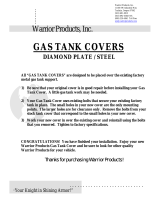 Warrior Products 904GTC Installation guide
Warrior Products 904GTC Installation guide
-
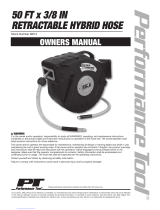 Performance Tool M613 Owner's manual
Performance Tool M613 Owner's manual
-
NETRAUTA 8024-32 User manual
-
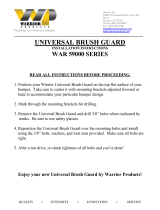 Warrior Products 59015 Installation guide
Warrior Products 59015 Installation guide
-
Klutch Combo Air and Electric Hose Reel Owner's manual
-
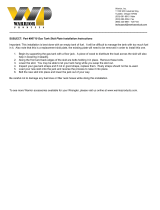 Warrior Products 90710 Installation guide
Warrior Products 90710 Installation guide
-
NORTHSTAR 157597 Owner's manual
-
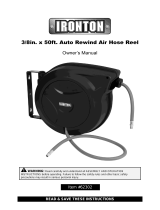 Ironton Retractable Auto-Return Hose Reel Owner's manual
Ironton Retractable Auto-Return Hose Reel Owner's manual
-
V-TUF HD140HOT Hot Water Professional Mobile Pressure Washer User manual
-
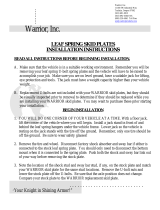 Warrior Products 1770 Installation guide
Warrior Products 1770 Installation guide











































